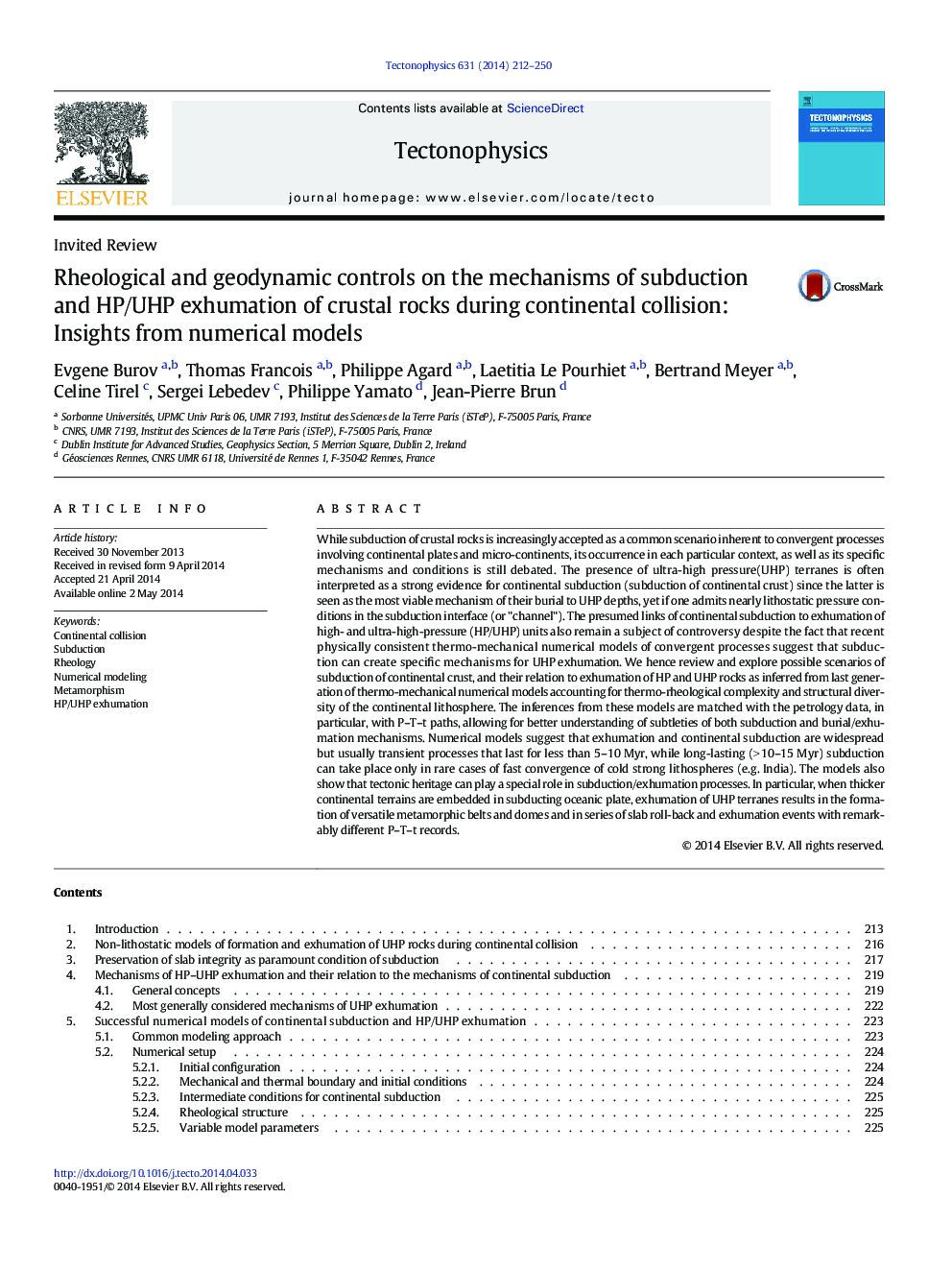| Article ID | Journal | Published Year | Pages | File Type |
|---|---|---|---|---|
| 4691887 | Tectonophysics | 2014 | 39 Pages |
•We study continental subduction and UHP exhumation using advanced numerical models.•Continental subduction is mainly a transient process requiring strong mantle lithosphere rheology•During convergence, UHP exhumation occurs at subduction phase.•UHP exhumation is a poly-phase process driven by viscous buoyancy drag.•UHP exhumation is favored in slow convergence settings.
While subduction of crustal rocks is increasingly accepted as a common scenario inherent to convergent processes involving continental plates and micro-continents, its occurrence in each particular context, as well as its specific mechanisms and conditions is still debated. The presence of ultra-high pressure(UHP) terranes is often interpreted as a strong evidence for continental subduction (subduction of continental crust) since the latter is seen as the most viable mechanism of their burial to UHP depths, yet if one admits nearly lithostatic pressure conditions in the subduction interface (or "channel"). The presumed links of continental subduction to exhumation of high- and ultra-high-pressure (HP/UHP) units also remain a subject of controversy despite the fact that recent physically consistent thermo-mechanical numerical models of convergent processes suggest that subduction can create specific mechanisms for UHP exhumation. We hence review and explore possible scenarios of subduction of continental crust, and their relation to exhumation of HP and UHP rocks as inferred from last generation of thermo-mechanical numerical models accounting for thermo-rheological complexity and structural diversity of the continental lithosphere. The inferences from these models are matched with the petrology data, in particular, with P–T–t paths, allowing for better understanding of subtleties of both subduction and burial/exhumation mechanisms. Numerical models suggest that exhumation and continental subduction are widespread but usually transient processes that last for less than 5–10 Myr, while long-lasting (> 10–15 Myr) subduction can take place only in rare cases of fast convergence of cold strong lithospheres (e.g. India). The models also show that tectonic heritage can play a special role in subduction/exhumation processes. In particular, when thicker continental terrains are embedded in subducting oceanic plate, exhumation of UHP terranes results in the formation of versatile metamorphic belts and domes and in series of slab roll-back and exhumation events with remarkably different P–T–t records.
